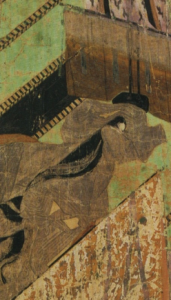Readers and scholars of monogatari—court tales written between the ninth and the early twelfth century (during the Heian and Kamakura periods)—have generally agreed that much of their focus is on amorous encounters. They have, however, rarely addressed the question of whether these encounters are mutually desirable or, on the contrary, uninvited and therefore aggressive. I argue that not only can the phenomenon of sexual violence be clearly defined in the context of the monogatari genre, but also that it is easily identifiable within the text of these tales, by virtue of the coherent and cohesive patterns used to represent it. Finally, I map out further strategies to pursue the topic of sexual violence and its relationship with the female body beyond the monogatari genre, into medieval setsuwa narratives, raising a series of important questions regarding the continuity/ discontinuity between the monogatari and the setsuwa genres.
